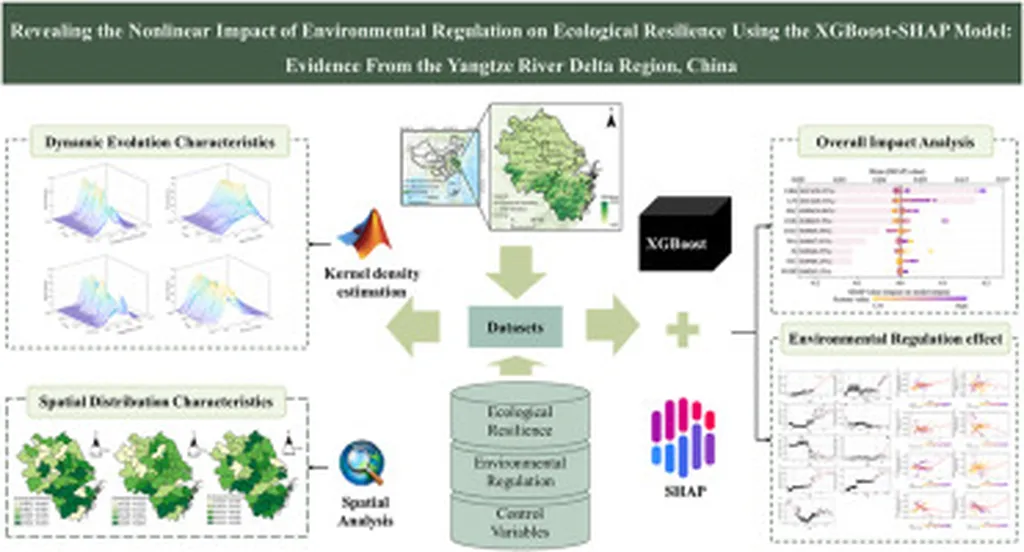In the heart of China’s Yangtze River Delta, a complex dance of water management is unfolding, one that could reshape how industries, particularly energy, approach flood risk in plain river network areas. A recent study, led by Shouwei Shang from the Nanjing Hydraulic Research Institute, has shed light on the intricate mechanisms of cross-regional flood interactions driven by changes in polder drainage capacity. Published in the journal *Geomatics, Natural Hazards & Risk* (translated as *Geomatics, Natural Hazards & Risks*), this research offers a nuanced understanding of how modifications in one area can have ripple effects across the region.
The Yangtze River Delta, a demonstration zone for green and integrated ecological development, has seen intensified polder construction and drainage capacity modifications. These changes, while aimed at mitigating local flood risks, have inadvertently transferred risks to other regions. Shang and his team aimed to quantify these interactions and develop tools for better flood management.
Using an integrated hydrological-hydrodynamic model coupled with a Drainage Response Index (DRI), the researchers simulated various drainage schemes and pumping operations under a 100-year design rainstorm. Their findings revealed that enhancing drainage within a polder can stabilize internal water levels but elevate external river levels, transferring flood risks outward. “Enhanced drainage stabilizes internal polder water levels but elevates external river levels by 8.1~22.3 cm, transferring flood risks outward,” Shang explained. This means that while one area might see a reduction in flood risk, neighboring regions could face increased risks.
The study also highlighted the distance-decay characteristics of flood propagation. For instance, drainage in Wujiang elevated downstream Jiashan’s peak water level by 14.2 cm and Qingpu’s by 8.1 cm, while Qingpu’s drainage impacts upstream Wujiang by only 2.7 cm. This underscores the complex interplay between different regions and the need for coordinated flood management strategies.
One of the most significant findings was the negative DRI slopes, indicating that adjacent water levels are most sensitive to the current drainage conditions of a polder. As Shang put it, “The DRI slopes were negative, Jiashan to Wujiang DRI dropped from 0.1336 to 0.0010, indicating that adjacent water level is most sensitive to the current drainage condition of a polder.”
For the energy sector, these findings are particularly relevant. Energy infrastructure, such as power plants and transmission lines, is often located in flood-prone areas. Understanding the cross-regional flood interaction dynamics can help energy companies better assess risks and implement more effective flood management strategies. This could lead to more resilient infrastructure and reduced downtime during flood events, ultimately ensuring a more stable energy supply.
The research also supports the development of optimized multi-jurisdictional flood coordination. By understanding how changes in one area affect others, policymakers and industry stakeholders can work together to create more effective flood management frameworks. This could lead to more sustainable development in plain river network areas, benefiting not just the energy sector but also other industries and communities.
As we look to the future, this research could shape how we approach flood management in similar regions around the world. By providing a quantitative understanding of cross-regional flood interactions, Shang and his team have laid the groundwork for more coordinated and effective flood management strategies. This, in turn, could lead to more resilient communities and industries, better prepared to face the challenges of a changing climate.

